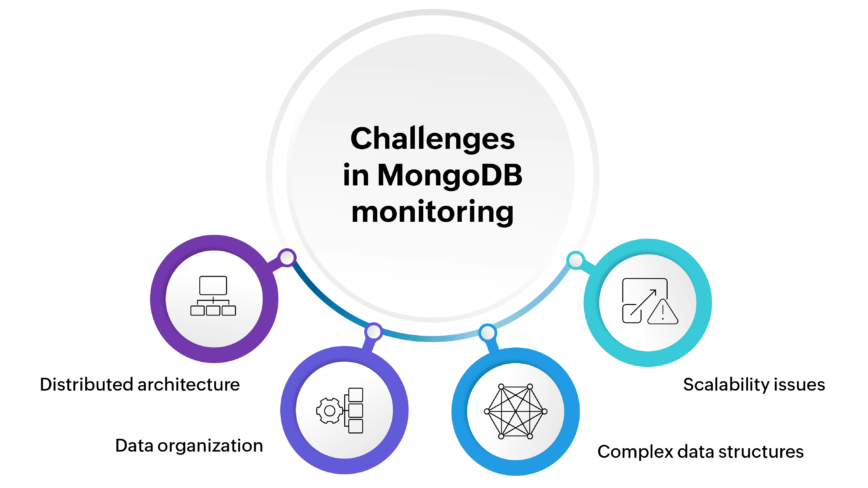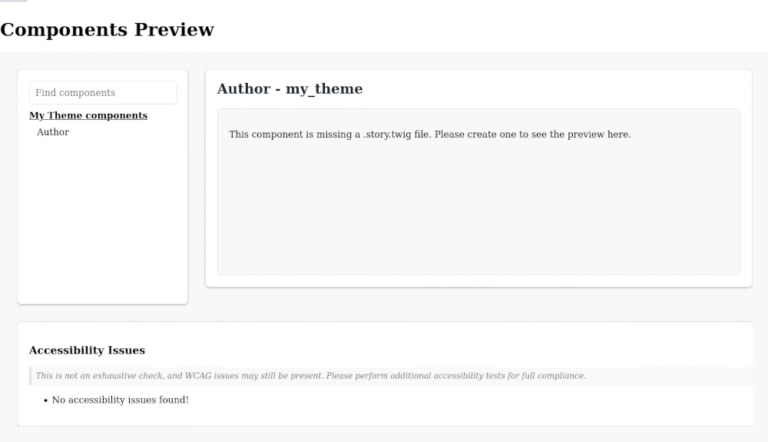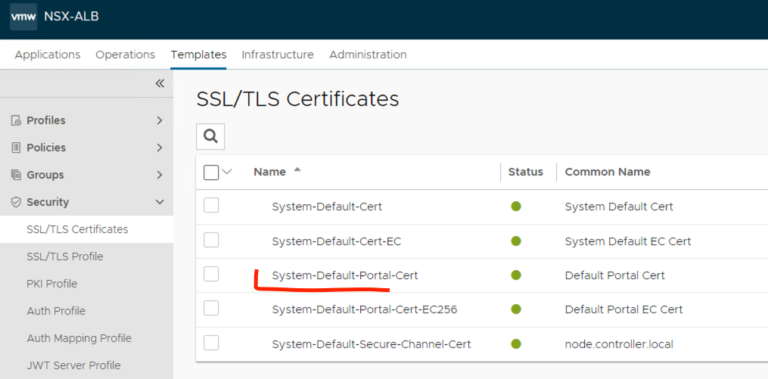MongoDB is an open-source NoSQL database management system that stores data in JSON-like documents. It’s designed to handle large volumes of data with a document-oriented architecture and can operate without a predefined schema, allowing for more flexibility in data storage and retrieval and making it a highly scalable option for businesses of all sizes. It’s also known for its cross-platform compatibility, making it a popular choice for developers working with various programming languages. Additionally, MongoDB is known for its strong performance and fault tolerance, ensuring that data is always available and secure.

Table of Contents
What is MongoDB monitoring?
MongoDB monitoring involves observing and monitoring the performance and operation of MongoDB databases. It helps in identifying any potential issues and rectifying them before they can impact the system’s performance or lead to downtime. This helps to ensure the smooth operation of your MongoDB databases.
Why is MongoDB monitoring important?
Many organizations, particularly start-ups, are increasingly turning to MongoDB for their database needs due to its reputation for being simple, lightweight, and capable of handling massive amounts of data storage and load balancing. However, any issues with performance, such as downtime or latency, can be challenging to manage, especially during spikes in user activity. Additionally, the task of collecting and consolidating data from multiple sources can be overwhelming during root cause analysis.
Obtaining comprehensive visibility into the performance of your MongoDB databases is crucial to ensure that your infrastructure is operational and your business application is functioning effectively. This visibility can help you save time and effort by optimizing performance and promptly addressing any issues that may arise. Monitoring MongoDB metrics continuously is essential for maintaining high availability and seamless business performance. Therefore, implementing a reliable MongoDB monitoring solution is necessary.
What are the challenges faced in MongoDB monitoring?

MongoDB is famous for its rapid and effective data storage capabilities; however, managing and monitoring them can present some difficulties. Here are some common challenges seen in MongoDB monitoring:
- Distributed architecture: Tracking the performance of entire MongoDB databases can become complicated due to the data being spread across various MongoDB instances, with issues potentially arising from these different instances.
- Data organization: Combining information from multiple MongoDB databases for immediate analysis can be difficult, particularly when dealing with incident resolution.
- Complex data structures: MongoDB’s non-tabular storage and dynamic data structures can make it challenging to retrieve and analyze data from sources, especially when interacting with databases from older systems.
- Scalability issues: Dealing with large volumes of data that are accessed simultaneously at faster rates might necessitate scaling up your MongoDB database resources to ensure optimum performance, which can make it challenging to manage and monitor them effectively.
While MongoDB has its own monitoring capabilities, like mongostat and mongotop, a third-party solution like ManageEngine Applications Manager is better suited for complex deployments. This software not only tracks MongoDB but also other infrastructure components, providing a holistic view of your complete IT environment. This allows for quicker identification of issues and root cause analysis. With customizable dashboards, real-time anomaly detection, and automated alerts, it encourages a proactive approach to incident troubleshooting and resolution, minimizing user impact.
Monitor key MongoDB performance metrics with Applications Manager
Database status and health
Identifying inactive or down databases among the numerous ones running simultaneously in your infrastructure can be a challenging task. Ensuring high availability of databases is a top priority in business infrastructure. Dealing with multiple database issues at once can prove to be difficult.
Applications Manager allows you to monitor the health status and availability of your MongoDB databases continuously. The Infrastructure View offers a detailed overview of the health and availability of your database instances within your cluster, including memory usage and network traffic for each instance. This visibility provides a comprehensive understanding of how your database clusters are performing within your business infrastructure.
Resource usage statistics
Monitoring the resource utilization of your database server is crucial for managing multiple databases in your infrastructure. Exceeding the necessary limits can result in performance issues and capacity problems, making it difficult to pinpoint the root cause during escalations.
With Applications Manager’s MongoDB monitoring, you can continuously monitor the usage statistics of the system resources utilized by your MongoDB database. It keeps track of the performance of your MongoDB servers by monitoring important resource usage metrics, like CPU, memory, and network traffic handled by your database instance, and alerts you immediately if there are any abnormal utilization values. Additionally, you can access a comprehensive overview of the database statistics for each MongoDB database instance, including the number of collections, objects, and indexes as well as the data size, index size, and file size. This information helps you understand how each database is performing and enables you to plan capacity accordingly.
Database operations
Even if your database is functioning, the operations it performs could be causing delays in your business processes. If left unaddressed, these issues could lead to significant performance declines, causing unnecessary downtime and quickly impacting overall business operations.
Applications Manager simplifies the monitoring of real-time database operations in MongoDB databases by providing detailed insights. It monitors key performance indicators related to database operations, allowing you to understand the performance of your applications in the MongoDB environment. Some of these metrics include:
- Response time: Denotes the duration it takes for the MongoDB database to reply to requests from different users interacting with the database. Applications Manager enables you to monitor the response time of your MongoDB database and offers real-time insights into its performance.
- Query statistics: Monitoring the number of queries processed per second provides valuable insights into the performance capabilities of your MongoDB database. With Applications Manager, you can monitor the volume of queries handled by your database, categorized by different query types. This information helps in estimating the daily workload and capacity requirements, allowing for effective capacity planning when necessary.
- Latency details: Understanding the time it takes to store or retrieve data from your database can provide insights into the efficiency of your MongoDB database. By using Applications Manager, you can easily determine the delay in read or write requests and promptly address any issues to reduce delays when values are high.
- Connections: Understanding the number of connections to your database is crucial for monitoring how applications interact with your MongoDB database. Applications Manager offers in-depth information on the current available connections and those in use, allowing you to analyze connection patterns and pinpoint any slow or excessive connections from your applications.
- Page faults: Running systems with data sizes exceeding available virtual memory can lead to data being accessed from the disk, causing page faults. A high number of page faults may indicate full virtual memory, resulting in the database reading or writing from the disk and slowing down performance. Applications Manager monitors page faults in the database to detect when data is being read or written from the disk instead of from virtual memory, highlighting the need for memory optimization.
Replication statistics
Replication is crucial for maintaining high availability and fault tolerance when working with multiple database instances. Monitoring the performance of replica sets is essential to guarantee constant access to your data from different locations without any delays.
With Applications Manager’s MongoDB replication monitoring capabilities, you can get detailed visibility into the performance of replica sets in your MongoDB clusters. It offers a comprehensive overview of the replica configuration details, including primary nodes, secondary nodes, and replication lag with the primary node as well as information on replicas and shards in the database. You can make use of in-depth insights into the query operations performed per second on replica sets, as well as obtain details on oplog entries to better understand the replication statistics of MongoDB database instances.
Start monitoring MongoDB with Applications Manager
Effective MongoDB performance monitoring is vital for maintaining optimal database performance and ensuring the smooth operation of applications reliant on MongoDB. By using Applications Manager’s comprehensive MongoDB monitoring capabilities, you can proactively identify and resolve issues before they escalate, minimizing downtime and maximizing system efficiency.
You can experience the capabilities of Applications Manager by downloading a free, 30-day trial or by scheduling a personalized demo with our experts.
Author Name: Arshad Shariff

About the author: Arshad Shariff is a technical content writer at ManageEngine, a division of Zoho Corporation. He actively contributes to content on the application performance monitoring domain within the IT Operations Management suite. He delivers content through user guides, blogs, articles, and webpages that are simple to comprehend for readers with ease.






